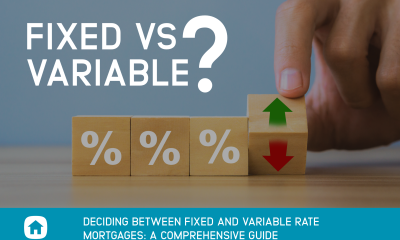Just like all major adult milestones, buying a home requires a lot of paperwork.
There are offers to make, agreements to read, and contracts to sign. Once the seller accepts your offer to purchase, you’d think the volume of paperwork would ebb, and you’d be wrong.
Now you’ll need to apply for a mortgage, which requires its own small mountain of documentation.
You’ll need to provide at least a dozen types of documents during the mortgage approval process. Some of them are obvious, like your credit report and a list of your current assets, while others might come as a surprise. Here are three key aspects of the mortgage approval process that require documentation.
These documents are non-negotiable and could make or break your mortgage application, so it’s a good idea to start tracking them down well in advance.
Down Payment Documentation
When you purchase a home, you must have a minimum down payment of at least 5% of the purchase price.
This money can come from a variety of sources, including your savings, a gift from friends or family, or by using the Home Buyer’s Plan, which allows you to withdraw up to $25,000 from your Registered Retirement Savings Plan (RRSP) to use as a down payment.
How To Buy A House (2/5) – The Downpayment
While your down payment can come from a variety of sources, you do need to prove the origins of your money. If you are using your savings, you’ll need to furnish your mortgage broker with 90 days of account statements.
You must include a list of explanations for any irregular deposits during that time including proceeds from vehicle sales and wedding gifts.
If your friends or family are providing you with a monetary gift to go towards your down payment, they will need to explain that gift by providing your mortgage broker with a gift letter. A gift letter should include the name of the gift giver, the name of the recipient, the total amount of the gift being received, along with confirmation that the gift is genuine and there is no expectation of repayment. Finally, the gift letter should stipulate that the gift is not supplied by anyone with an interest in the sale of the home you are purchasing.
If you are using the HPB to help fund your down payment, you’ll also need copies of T1036 form that you submitted to the bank to make that withdrawal.
Transactional Documentation
Transactional documentation for a mortgage includes information about the actual home you are purchasing. Your transactional documentation should include a copy of the original listing, along with the original offer and any counter offers. Your real estate agent should provide this information to your mortgage broker on your behalf, but that doesn’t always happen, so it’s a good idea to prepare this information yourself.
The transactional documentation is required to make sure the purchase is compliant with Proceeds of Crime (Money Laundering) and Terrorist Financing Act (PCMLTFA), which aims to prevent fraudulent real estate transactions.
Beyond preventing crimes, your lender also needs this information to verify that you aren’t overpaying for the home, which protects the lender in the event you default on your mortgage. In some markets, the transactional documentation may be insufficient, and your lender may require a professional appraiser to verify the fair selling price of the home.
Income Documentation
Finally, your lender will want to verify your income. If you have a full-time job, you’ll need a few documents including your T4 from the previous tax year and two recent pay stubs.
The other piece of documentation that you need is a letter from your employer confirming your employment and salary. Depending on how responsive your employer is, this letter could take some time, so it’s best to secure it as early in the home buying process as possible.
If you are self-employed, you’ll need a different set of documents. These documents are meant to prove your income from sources other than an employer. To prove your income as a self-employed person, you’ll need two years of Notice of Assessments (issued by the Canada Revenue Agency after you file your taxes) and two T1 Generals, which is the PDF file that is created and submitted to the CRA when you file your taxes online or with an accountant.
It’s important to note that the only income with a paper trail can be verified, so if you have a side job that you are compensated for with cash and don’t claim on your income tax return, that income will not count.
Bonus: Property Documentation
While not a necessity for every home, many rural homes will require extra documentation because they aren’t on municipal water and sewer lines. For example, a rural home may use its own water well and septic system. Your lender may require systems to be inspected by a third-party company, and the well water may need to be tested to ensure it is suitable for consumption.
While this additional documentation may seem onerous at the time, keep in mind that these additional inspections are designed to protect your investment as well as your lender’s. The last thing you want is for your home’s well water to be unsuitable for consumption, or for the septic system to require replacing!
Whether you are just getting started with the home-buying process or you are already well underway, it’s never too late to start getting your documentation in order. A ClearHome mortgage broker will furnish you with a list well in advance, so there will be no surprises when it comes time to move forward with your home purchase.

 Buying a Home5 years ago
Buying a Home5 years ago
 Credit6 years ago
Credit6 years ago
 Business4 years ago
Business4 years ago
 5 Mortgage Secrets7 years ago
5 Mortgage Secrets7 years ago
 Buying a Home6 years ago
Buying a Home6 years ago
 5 Mortgage Secrets6 years ago
5 Mortgage Secrets6 years ago
 News12 months ago
News12 months ago
 Business4 years ago
Business4 years ago





